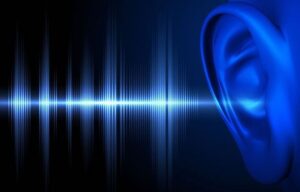 In the eyes (and ears) of the customer component/subsystem noise and vibration correlate directly to overall product quality. And OEMs are holding suppliers accountable like never before. But when it comes to defining acceptable levels, OEM requirements are often vague leaving suppliers to fend for themselves. Noise and vibration must be measured in terms of objective metrics rather than left to subjective interpretation.
In the eyes (and ears) of the customer component/subsystem noise and vibration correlate directly to overall product quality. And OEMs are holding suppliers accountable like never before. But when it comes to defining acceptable levels, OEM requirements are often vague leaving suppliers to fend for themselves. Noise and vibration must be measured in terms of objective metrics rather than left to subjective interpretation.
DEFINING OBJECTIONABLE NOISE
Objectionable Noises must be defined and quantifiably measured. In the world of NVH we measure:
- Noise as frequency and amplitude of sound pressure
- Vibration as frequency and amplitude of acceleration/velocity/displacement
- Harshness as subjective rating of the N&V components
METRIC DEVELOPMENT: THE SIGNALYSIS APPROACH
Signalysis designs metrics that correlate the Harshness to a value that has a linear range which will sort from Worst-of-Worst to Best-of-Best! The goal is to design a metric that allows the supplier to be in control of their destiny and not tied to something we dream up.
CASE STUDY: HAMMERING
- Objectionable noise termed “Hammering” exhibits low overall acceleration level.
- Attempts to screen hammering units based on overall acceleration would result in extreme fallout.
Metric Development to Subjective Rating
- A known population of units are subjectively analyzed and rated for presence of hammering noise (0-10).
- A metric is designed and refined based on measured time varying signal content.
- In this case, order-based envelope spectrum provides a good start. Additional calculations are performed to provide a single value quantifying the amount of hammering present.
Deployment
- Deploy the metric on the production floor
- Run normal production and known “red rabbits”
- Generate distributions to estimate fallout and finalize tolerances
- Assign tolerances
- Run GRR if you have example units with known levels of the defect
- Let the screening begin
WHAT’S NEXT?
You now have DATA to quantify and support quality. The customer can no longer just subjectively object to a noise because you have modeled it, linearized it and screened for it. This provides you with the ability to calibrate your customers complaints and setup the system for success!
